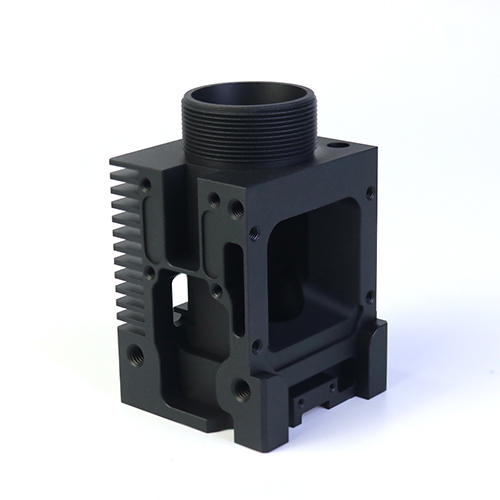In today’s fast-evolving industrial landscape, the machining industry is at the epicenter of a transformative wave. From precision components for aerospace and automotive applications to intricate parts for medical devices and electronics, machining continues to play a vital role in modern manufacturing. However, the industry is currently navigating a complex environment shaped by technological advancements, global economic pressures, and evolving customer demands.
Let’s explore the current state of the machining industry and where it is headed in the coming years.
The Current Situation of the Machining Industry
1. Technological Integration
The machining industry is experiencing a rapid adoption of cutting-edge technologies like computer numerical control (CNC) systems, artificial intelligence (AI), and additive manufacturing (AM). CNC machining remains a cornerstone, providing high precision and automation, while AI and IoT are enhancing efficiency through predictive maintenance and real-time monitoring. Hybrid solutions combining CNC and 3D printing are also gaining traction, enabling manufacturers to produce complex geometries with reduced lead times.
2. Focus on Precision and Customization
With the rise of industries like aerospace, automotive, and medical devices, the demand for precision and customization has surged. Customers expect parts with tighter tolerances and unique designs, pushing manufacturers to invest in ultra-precision machining and multi-axis capabilities to meet these requirements.
3. Global Supply Chain Challenges
The machining industry has not been immune to disruptions caused by global events, such as the COVID-19 pandemic, geopolitical tensions, and material shortages. These challenges have highlighted the importance of building resilient supply chains and adopting local sourcing strategies to mitigate risks.
4. Sustainability Pressures
Environmental concerns and stricter regulations are driving the industry toward greener practices. Machining processes are being optimized to reduce material waste, energy consumption, and emissions. The shift toward sustainable materials and recyclable alloys is also gaining momentum, as manufacturers aim to align with global sustainability goals.
5. Labor and Skills Gap
While automation is addressing some workforce challenges, the industry continues to face a shortage of skilled machinists and engineers. This skills gap is prompting companies to invest in training programs and collaborate with educational institutions to prepare the next generation of talent.
Development Directions for the Machining Industry
1. Digital Transformation
The future of machining lies in embracing digitalization. Smart factories equipped with IoT-enabled machines, digital twins, and AI-driven analytics are expected to dominate the industry. These technologies will provide real-time insights, optimize workflows, and enable predictive maintenance, reducing downtime and boosting efficiency.
2. Advancements in Automation
As labor costs rise and demand for high-volume production grows, automation will play an even greater role in the machining industry. Robotic arms, automated tool changers, and unmanned machining centers are set to become the norm, delivering faster production rates and consistent quality.
3. Adoption of Hybrid Manufacturing
The integration of traditional machining with additive manufacturing is unlocking new possibilities for producing complex parts. Hybrid machines that combine subtractive and additive processes allow for greater design flexibility, reduced material waste, and the ability to repair or modify existing parts more efficiently.
4. Sustainability and Green Machining
The industry is poised to adopt more sustainable practices, including the use of biodegradable cutting fluids, energy-efficient machines, and recyclable materials. Manufacturers are also exploring circular economy models, where scrap material is reused or repurposed, reducing environmental impact.
5. Ultra-Precision and Micro-Machining
As industries like electronics and medical devices demand increasingly smaller and more precise components, ultra-precision machining and micro-machining technologies will see significant growth. These techniques enable the production of parts with sub-micron tolerances, ensuring superior performance in critical applications.
6. Globalization vs. Localization
While globalization has been a driving force in the industry, recent challenges are shifting the focus toward local manufacturing hubs. Regional production facilities closer to end markets can reduce lead times, enhance supply chain resilience, and lower transportation costs.
7. Material Innovation
The development of new alloys, composites, and high-performance materials is driving innovation in machining processes. Lightweight materials like titanium and carbon fiber, along with advancements in cutting tools, are enabling manufacturers to meet the demands of industries such as aerospace and renewable energy.
Industry Outlook
The machining industry is on the brink of a new era defined by innovation and adaptability. As technologies like AI, IoT, and hybrid manufacturing continue to evolve, manufacturers must remain agile to capitalize on emerging opportunities.
Experts predict that the global machining market will witness steady growth in the coming years, driven by the increasing adoption of automation, rising demand for precision parts, and the shift toward sustainable manufacturing. By investing in cutting-edge technologies and addressing workforce challenges, the industry can overcome current obstacles and chart a path toward long-term success.
Conclusion: Machining for a Smarter, Sustainable Future
The machining industry is no longer confined to traditional methods; it is a dynamic, technology-driven sector shaping the future of manufacturing. As companies navigate challenges and embrace innovation, they are setting the stage for a smarter, more efficient, and sustainable industry.
From smart factories to ultra-precision techniques, the machining industry’s journey is a testament to the transformative power of technology and its role in revolutionizing global manufacturing. For businesses willing to innovate and adapt, the opportunities are endless—and the future is bright.
Post time: Jan-02-2025





